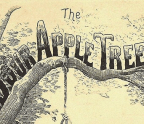UNLIMITED
HOME FRONT HEROES

Understandably, much attention in a war’s aftermath is devoted to the officers and soldiers who bore arms during the conflict. Scrutiny also tends to go to the armies’ supporting casts, the men who served in positions such as engineer or quartermaster, as well as the politicians who led the warring factions in civil servant roles. But what of the civilians? The following is Part 1 of a two-part series giving some of these noncombatants their due—a closer look at 24 figures who made a significant difference on the home front throughout the war.
The 12 individuals we’ve included below, in alphabetical order, represented both Northern and Southern interests, ranging from a diplomat to a former-slave-turned-seamstress to a chief justice to a uniform manufacturer. Regardless of vocation, each stood out during the most divisive period in the nation’s history. It is fitting to acknowledge their deeds.

CHARLES FRANCIS ADAMS (1807–1886)
Charles Francis Adams came from distinguished roots as the son of America’s sixth president, John Quincy Adams, and grandson of the second, John Adams. In May 1861, he became ambassadorial U.S. Minister to Great Britain, his tenure lasting until 1868. He fought for the Union on the diplomatic front, using words, persuasion, information, and personal charm in battles against the Confederates.
Adams made two particularly critical contributions to the Union cause. The first came in the fall of 1861 when U.S. sailors boarded a British ship and seized two Confederate envoys headed to Europe, what became known as the Trent Affair. This invasion of British sovereignty brought the United States and Britain close to war. Adams was a key communication conduit between London and Washington, D.C., in brokering a solution to the crisis involving the release of the Confederates.
Adams also made London the focal point of tracking and countering Confederate commerce raiders in European waters. The Confederate Navy built and bought many ships using front companies in Britain, servicing them in neutral ports. Adams documented these transactions and forcefully argued that they were neutrality violations, creating as many roadblocks to Confederate efforts as possible. In 1865, he persuaded Britain to seize several Confederate ships under construction and took control of CSS Shenandoah when it turned up in Liverpool in November 1865.
As Confederate ships plied the waters around Britain and to CSS arrival in Cherbourg, resulting in sinking.
You’re reading a preview, subscribe to read more.
Start your free 30 days





